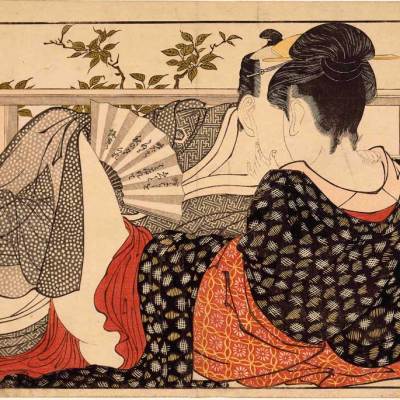As implied in its title – ‘An American in London: Whistler and the Thames’ – the Dulwich Picture Gallery’s current exhibition is about both displacement and a sense of place. Born in the US, trained in France, but resident in London for most of his life, James Abbott McNeill Whistler resists easy categorisation. The exhibition at Dulwich, South London, attempts to find a home for him on the banks of the Thames, bringing together over 50 of his works spanning his career from his arrival in England in 1859 to his death in 1903.
The exhibition is keen to emphasise that Whistler was an American. Supported by the American Friends of the Dulwich Picture Gallery, the show will tour next year to the Addison Gallery of American Art, Andover, Massachusetts and the Freer Gallery of American Art and Arthur M. Sackler Gallery, Washington D.C. Many of the works on display have been borrowed from US collections including the Metropolitan Museum of Art, the Colby College Museum of Art, the Museum of Fine Arts, Boston, the National Gallery of Art, Washington DC, and the Art Institute of Chicago.
Although American institutions may wish to claim Whistler as one of their own, his art was concerned with the Old World, and particularly London, Paris and Venice. In his methods and subject matter he displayed a disdain for European academic traditions and aesthetic sensibilities, but his affiliations were to French Realism, rather than to a characteristically American vision. As the Tate Britain’s 2005 exhibition, ‘Turner, Whistler, Monet’, demonstrated, Whistler was located on a European artistic continuum that found its expression in the fogs and reflections of the Thames, the Seine and the Venetian Lagoon.
Nocturne: Blue and Gold ‐ Old Battersea Bridge (1872/3), James Abbott McNeill Whistler © Tate, London 2012

The Dulwich exhibition makes little attempt to explore what, if anything, was particularly American about Whistler’s art. Instead, the show’s real focus is on the Thames, and the artist’s evolving responses to the river during his career. We start with his early etchings of the docklands, with which he established his reputation, then move on to the Courbet-influenced paintings of the 1860s, the Nocturnes of the 1870s, and finally the sombre lithographs of his last years. To this end, the curators have marshalled an impressive array of international loans, including Wapping from the National Gallery of Art, Washington, Variations in Pink and Grey from the Musée d’Orsay, and Brown and Silver: Old Battersea Bridge from the Addison Gallery of American Art.
Whistler disregarded the imperial grandeur of London and its great river, but was drawn instead to everyday subjects, the wharves, shipping, and factories and the people who lived and worked on the Thames. Bridges featured prominently in his art, not because of their picturesque qualities, but because of the formal characteristics of their construction. This was an interest Whistler inherited from his father, who was an engineer and bridge-builder. But it was also inspired by Japanese woodcuts, an influence illustrated in the exhibition by two examples of bridge compositions by Hiroshige and Hokusai.
The Japanese woodcuts might seem an odd inclusion in an exhibition about the Thames, but they underline some of the contradictions in the show. The trend in Whistler’s art through his career was away from the descriptive and towards a simplified visual language that did not depend on the depiction of a specific location. He achieved this with the twilight atmospherics of his dreamlike Nocturnes. Ultimately, Whistler’s art did not find a home in a particular place, but in a universal aesthetic that anticipated modernism.
‘An American in London: Whistler and the Thames’ is at the Dulwich Picture Gallery until 12 January 2014.
It then tours to the Addison Gallery of American Art, Andover, Massachusetts (1 February–13 April 2014) and the Freer Gallery of American Art and Arthur M. Sackler Gallery, Washington D.C. (2 May–14 August 2014).





